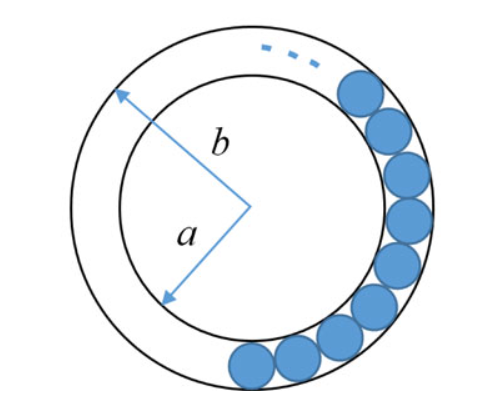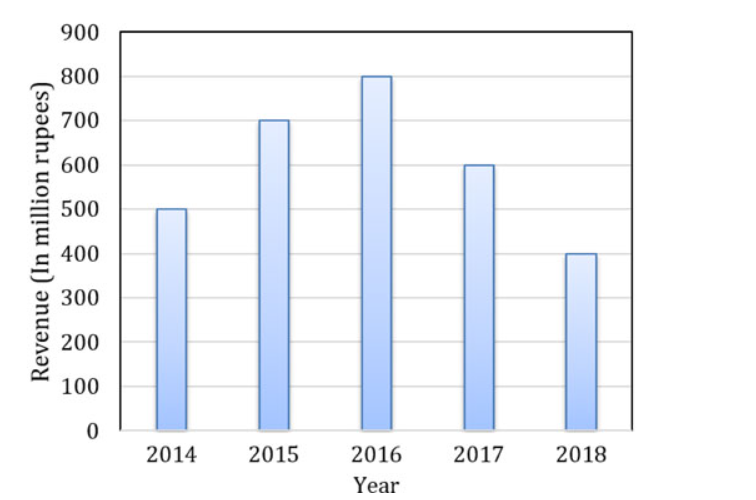Graduate Aptitude Test in Engineering
Date: 8th Feb 2020
General Aptitude (GA)
Q.1 – Q.5 Carry ONE mark each.
Q. 6 – Q. 10 Carry TWO marks each.
Q1. Raman is confident of speaking English ______ six months, as he has been practising regularly____ the last three weeks.
(A) during, for
(B) for, since
(C) for, in
(D) within, for
Ans: (D) within, for
Q2. His knowledge of the subject was excellent, but his classroom performance was______
(A) extremely poor
(B) good
(C) desirable
(D) Praiseworthy
Ans: (A) Extremely poor
Q3. Select the word that fits the analogy:
Cook : Cook : : Fly:___
(A) Flyer
(B) Flying
(C) Flew
(D) Flighter
Ans: (A) Flyer
Solution: A cook(Chef) cooks (cook) and a flyer flies (fly)
Q4. The dawn of the 21st century witnessed the melting glaciers oscillating between giving too much and too little to billions of people who depend on them for fresh water. The UN climate report estimates that without deep cuts to man-made emissions, at least 30% of the Northern Hemisphere’s surface permafrost could melt by the end of the century. Given this situation of imminent global exodus of billions of people displaced by rising seas, nation-states need to rethink their carbon footprint for political concerns if not for environmental ones.
Which one of the following statements can be inferred from the given passage?
(A) Nation-states do not have environmental concerns
(B) Nation-states are responsible for providing fresh water to billions of people
(C) Billions of people are responsible for man-made emissions
(D) Billions of people are affected by melting glaciers
Ans: (D) Billions of people are affected by melting glaciers
Q5. There are multiple routes to reach from node 1 to node 2, as shown in the figure below:

The cost of the travel on an edge between two nodes is given in rupees. Nodes, ‘a’, ‘b’, ‘c’, ‘d’, ‘e’ and ‘f’ are toll booths. Which is the cheapest route from node 1 to node 2?
(A) 1-a-c-2
(B) 1-f-b-2
(C) 1-b-2
(D) 1-f-e-2
Ans: (B) 1-f-b-2
Solution: (A) Cost=200 + 100 + 100 = 400
(B) Cost= 100 + 0 + 200 = 300
(C) Cost = 300 + 200 = 500
(D) Cost = 100 + 100 + 200 = 400
So minimum cost is of (B)
Q6 – Q10 carry two marks each.
Q6. Goods and services tax is an indirect tax introduced in India in 2017 that is imposed on the supply of goods and services, and it subsumes all indirect taxes except few. It is a destination-based tax imposed on goods and services used, and it is not imposed at the point of origin from where goods come. GST also has a few components specific to state governments, central government and Union Territories(UTs). Which one of the following statements can be inferred from the given passage?
(A) GST is imposed on the production of goods and services.
(B) GST includes all indirect taxes.
(C) GST does not have a component specific to UT.
(D) GST is imposed at the point of usage of goods and services.
Ans: (D) GST is imposed at the point of usage of goods and services.
Q7. If P =3, R=27, T=243, then Q+S=______
(A) 40
(B) 80
(C) 90
(D) 110
Ans: (C) 90
Solution : P=3, R= 27, T=243
Sequence is: P=3
Q=3*3=9
R=3 * 3 * 3=27
S=3 * 3 * 3 * 3 =81
Q + S= 9 + 81 = 90
Q8. The figure below shows an annular ring with outer and inner radii as b and a, respectively. The annular space has been painted in the form of blue colour circles touching the outer and the inner periphery of annual space. If maximum n number of circles can be painted, then the unpainted area available in annular space is _______

(A) Π [(b2-a2) – n/4(b-a)2]
(B) Π [(b2-a2) – n(b-a)2]
(C) Π [(b2-a2) + n/4(b-a)2]
(D) Π [(b2-a2) + n(b-a)2]
Ans: Π [(b2-a2) – n/4(b-a)2]

Q9. Two straight angles are drawn perpendicular to each other in X-Y plane. If α and β are the acute angles the straight lines make with the X- axis, then α+ β is _____
(A) 60°
(B) 90°
(C) 120°
(D) 180°
Ans: (B) 90°

In a triangle, sum of all three angles is 180°
So sum of angles i.e α+ β = 90°
Q10. The total revenue of a company during 2014-2018 is shown in the bar graph. If the total expenditure of the company in each year is 500 million rupees, then the aggregate profit or loss(in percentage) on the total expenditure of the company during 2014-2018 is ______

(A) 16.67% profit
(B) 16.67% loss
(C) 20% profit
(D) 20% loss
Ans: (C) 20% Profit
Solution: Total expenditure during each year =500 million rupees
Total expenditure for 5 years =500×5=2500 million rupees
- Revenue in 2014=500 million rupees
- Revenue in 2015=700 million rupees
- Revenue in 2016=800 million rupees
- Revenue in 2017=600 million rupees
- Revenue in 2018=400 million rupees
Total revenue =500+700+800+600+400=3000 million rupees
Profit =3000−2500=500 million rupees
Profit percentage =(500/2500)×100=20%.